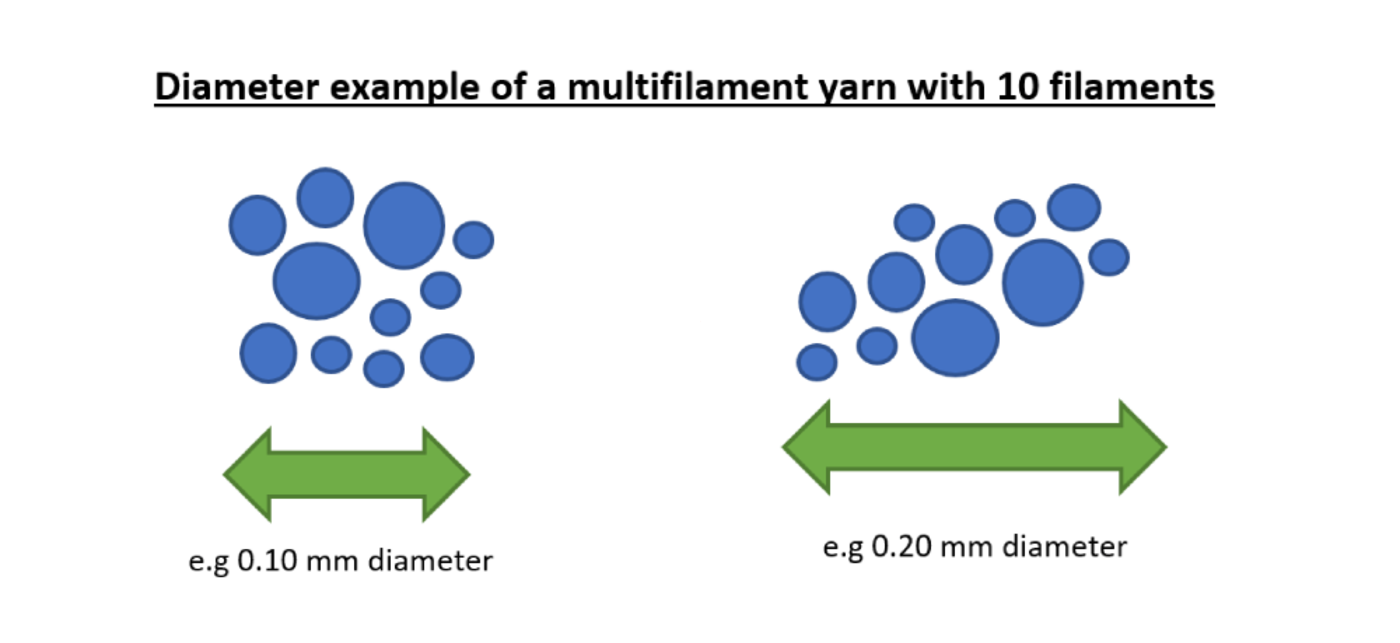TEX-SYSTEM
Swicofil indicates the counts of their yarns by means of the Tex-System.
TEX UNITS
| Term |
Definition
|
|---|---|
|
Basic Tex Unit [tex] |
Mass of yarn in grams per 1'000 meters length. |
|
Decimal fraction |
Mass of yarn in grams per 10'000 meters length. |
|
Decitex [dtex] |
1 g / 10'000m = 1/10tex Decitex is the count grading for filament and spinning yarns recognized by all international bodies in the man-made fibers industry. |
|
Decimal multiple |
Mass in kilograms per 1'000 meters length. |
|
Kilotex [ktex] |
1 kg / 1'000m = 1000 tex Kilotex is used to state the counts of spinning tow and similar semi-finished and finished products. |
OTHER NUMBERING SYSTEMS
| Term |
Definition
|
| Count Denier [den] |
Mass of yarn in grams for length of 9'000 meters.
|
| Metric yarns number [Nm] |
Length in meters per 1 gram of mass.
|
| English cotton yarn number [Ne], [ECC] |
Number of 840 yards strands per 1 English pound of mass.
|
| Wool runs |
Number of 1600 yards strands per 1 English pound of mass.
|
| Wool, worsted [NeK] |
Number of 560 yards strands per 1 English pound of mass.
|
| Wool, woolen measure [NeS] |
Number of 256 yards strands per 1 English pound of mass.
|
| Linen Count [NeL], [Lea] |
Number of 300 yards strands per 1 English pound of mass.
|
| Spun silk |
Number of 840 yards strands per 1 English pound of mass.
|
Worsted wool has nothing to do with worsted weight yarn. Worsted wool is wool which is carded and combed so that all the fibers are parallel. Woolen measure of Yorkshire wool is carded but not combed, so it is a little rougher. Worsted wool is usually very fine and used for suits and fine fabric. Hand knitting yarn is usually woolen type yarn. When quoting wool, some manufacturers specify "worsted" or "woolen" - however most do not indicate it.
CONVERSION FORMULAS FOR THE VARIOUS NUMBERING SYSTEMS
|
convert into →
known↓ |
tex |
dtex |
den |
Nm |
Ne |
|---|---|---|---|---|---|
| tex | - | 10 x tex | 9 x tex | 1'000 / tex | 591 / tex |
| dtex | dtex / 10 | - | 0.9 x dtex | 10'000 / dtex | 5'910 / dtex |
| den | den / 9 | den / 0.9 | - | 9'000 / den | 5314 / den |
| Nm | 1'000 / Nm | 10'000 / Nm | 9'000 / Nm | - | 0.59 x Nm |
| Ne | 591 / Ne | 5910 / Ne | 5314 / Ne | 1.69 x Ne | - |
In case you do not want to convert the counts yourself, use our count converter service here!
MULTIFILAMENT YARNS AND THE DIAMETER INDICATION
Although mono- and multifilament are closely related, they differ in one key aspect: the count indication. Whereas for monofilaments, you can easily use the diameter indication (masured in e.g. mm), the same cannot be applied for multifilaments, so for yarns that are made up by more than one filament.
Diameter strongly depends on how the filaments lie within the yarn. This is a property that depends on various factors (e.g. extend of twist, intermingling, …) and can even change considerably in 1m of a yarn. Diameter can thus not really be captured in a mm indication due to high variance.
Instead, we measure multifilaments by their weight (e.g. dtex, which measures the weight of the yarn in grams per 10'000 meters). Taking into account the specific gravity of a material, you can derive a rough thickness indication.
Instead, we measure multifilaments by their weight (e.g. dtex, which measures the weight of the yarn in grams per 10'000 meters). Taking into account the specific gravity of a material, you can derive a rough thickness indication.

